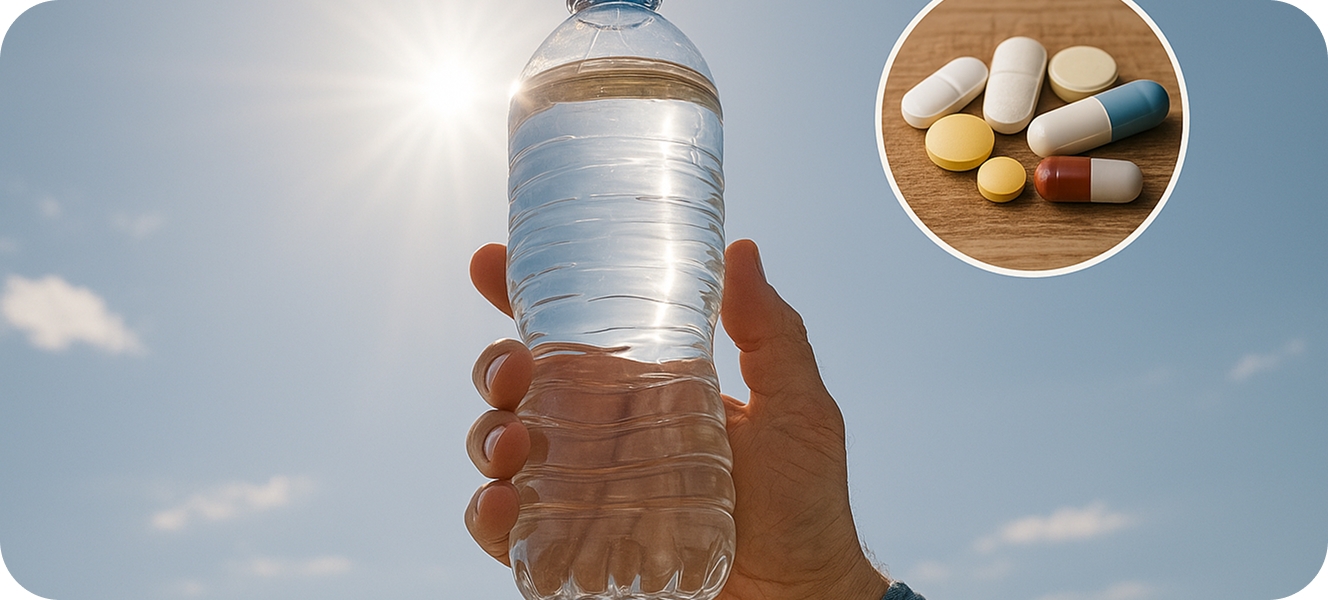
Clean water is life. Yet, more than 2 billion people around the world lack access to safely managed drinking water services. For many rural and low-resource communities, one of the simplest and most sustainable methods available is Solar Water Disinfection (SODIS). Using nothing more than plastic bottles and sunlight, SODIS has been proven to kill harmful pathogens and reduce cases of diarrheal disease.
But recent research by Obadimu et al., (2025) found that the presence of pharmaceuticals in water can reduce SODIS effectiveness by up to 40%. on the obadimu et al., While SODIS is powerful, the growing presence of pharmaceutical residues in rivers, streams, and wells can weaken its effectiveness. This means that families relying on the sun to disinfect their water may not always get the level of safety they expect.
How SODIS Works
SODIS is popular because it is:
- Affordable: Requires no costly infrastructure or chemicals.
- Simple: Involves filling transparent PET bottles with water and leaving them in the sun.
- Effective: Sunlight provides both UV-A radiation and heat, which together inactivate pathogens.
Here's what happens at a microscopic level: At a microscopic level, UV-A rays penetrate microbial cells, damaging their DNA or RNA and preventing bacteria and viruses from replicating. The heat stress inside the bottle, usually around 45-60°C, accelerates this damage, making microbes die faster. After 6-8 hours in strong sunlight, water that was once unsafe becomes drinkable. This method has been a game-changer for millions in Africa, Asia, and Latin America, significantly reducing waterborne diseases. However, the research highlights a crucial gap: the water being treated isn't always “natural.” In many places, rivers and wells are increasingly contaminated with residues of antibiotics, painkillers like (ibuprofen and paracetamol), and anti-inflammatory drugs.
These enter the water system from:
- Improper disposal of unused medicines (flushed into toilets, dumped in rivers).
- Hospital and pharmaceutical wastewater.
- Agricultural runoff from livestock treated with antibiotics.
These drugs may be invisible to the naked eye, but they can alter how sunlight interacts with pathogens. Some act like UV shields, absorbing the very rays that would normally kill bacteria. Others release reactive chemicals that change the water chemistry in unexpected ways.
Why This Matters for Your Family
For a family depending on SODIS, the impact could be significant:
- Incomplete disinfection: Bacteria may survive longer than expected, leading to hidden health risks.
- Antibiotic resistance: Sub-lethal exposure to antibiotics plus sunlight stress may encourage resistant strains.
- False sense of security: Clear water that has been “treated” may still harbor dangerous microbes.
While SODIS remains one of the best options, awareness of chemical contamination must be built into water safety education.
What Can Be Done
- Increase exposure time: Extending sun exposure beyond 6 hours improves results, especially when contamination is suspected.
- Pre-filter turbid water: Clear water allows UV penetration. Even a cloth filter can make a difference.
- Community medicine disposal programs: Prevent drugs from reaching rivers and wells in the first place.
- Integrate hybrid methods: Pair SODIS with natural additives (like lemon juice) or low-cost filtration for better results.
SODIS remains a lifeline, but like all technologies, it must evolve with the challenges of today. Families and communities can protect themselves not only by using sunlight but also by preventing pharmaceuticals from polluting their water. Share this post in your community network to raise awareness: water safety is everyone’s responsibility.
